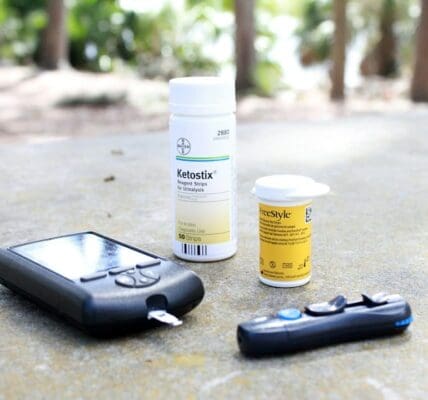In today’s digital age, e-mail marketing has become an essential tool for businesses to connect with their audience and drive engagement. However, with the average person receiving dozens of e-mails every day, it can be challenging to stand out in a crowded inbox. This is where the importance of a strong subline comes into play. A subline is the short line of text that appears below the subject line in an e-mail. It serves as a preview of what the e-mail contains and can greatly impact open rates. In this article, we will explore the significance of a compelling subline in your e-mail campaign and provide tips for crafting sublines that drive open rates.
Key Takeaways
- A strong subline is crucial for the success of your e-mail campaign.
- Craft a subline that captures your audience’s attention and entices them to open your e-mail.
- Use personalization and avoid common mistakes in subline creation to drive open rates.
- Subline length and creativity can impact open rates, so test and optimize for maximum impact.
- Your subline should complement your e-mail content and provide a clear value proposition.
The importance of a strong subline in your e-mail campaign
The subline is often the first thing that recipients see when they receive an e-mail. It is a powerful tool that can entice them to open the e-mail or simply ignore it. According to research, 47% of recipients open an e-mail based on the subject line alone, and the subline plays a crucial role in supporting and enhancing the subject line’s message.
A strong subline can capture your audience’s attention and create curiosity, leading to higher open rates. It provides an opportunity to give recipients a glimpse of what they can expect from the e-mail and why it is worth their time to open it. By crafting a compelling subline, you can increase the chances of your e-mails being opened and read, ultimately driving engagement and conversions.
Crafting a subline that captures your audience’s attention
To create a subline that captures your audience’s attention, there are several key elements to consider. First and foremost, relevance is crucial. Your subline should align with the content of your e-mail and clearly communicate what recipients can expect if they open it. It should be specific and avoid vague or generic language.
Urgency is another effective element to incorporate into your subline. By creating a sense of urgency, you can motivate recipients to open your e-mail immediately rather than putting it off for later. This can be achieved by using words like “limited time offer” or “exclusive deal” in your subline.
Curiosity is also a powerful tool when crafting a subline. By piquing recipients’ curiosity, you can make them curious enough to open your e-mail and find out more. This can be done by posing a question, teasing valuable information, or offering a sneak peek of what’s inside.
Here are some examples of effective sublines:
– “Don’t miss out on our biggest sale of the year!”
– “Discover the secret to doubling your productivity.”
– “Are you making these common skincare mistakes?”
– “Unlock exclusive content just for you.”
Tips for creating a subline that drives open rates
Crafting a subline that drives open rates requires careful consideration and attention to detail. Here are some practical tips to help you create compelling sublines:
1. Keep it short and concise: Aim for a subline that is no longer than 50 characters. Shorter sublines are more likely to be read in their entirety and have higher open rates.
2. Use action-oriented language: Incorporate action verbs into your subline to create a sense of urgency and encourage recipients to take immediate action.
3. Personalize when possible: Personalization can greatly increase the effectiveness of your sublines. Use recipient’s names or other relevant information to make the e-mail feel more personalized and tailored to their needs.
4. A/B test your sublines: A/B testing involves sending different versions of your e-mail with different sublines to a small sample of your audience and analyzing the results to determine which version performs better. This allows you to optimize your sublines based on data and improve open rates.
5. Analyze data and make adjustments: Regularly analyze data from your e-mail campaigns to identify trends and patterns. Use this information to make adjustments to your sublines and optimize them for maximum impact.
The role of personalization in sublines
Personalization is a powerful tool in e-mail marketing, and it can greatly enhance the effectiveness of your sublines. By addressing recipients by their names or using other relevant information, you can create a sense of familiarity and make the e-mail feel more personalized.
For example, instead of using a generic subline like “Check out our latest offers,” you could personalize it by saying “John, check out these exclusive offers just for you.” This personal touch can make recipients feel valued and increase their likelihood of opening the e-mail.
Another way to personalize sublines is by segmenting your audience based on their preferences or behavior. For example, if you have an e-commerce store and a customer has recently purchased a product from a specific category, you can send them an e-mail with a subline like “Sarah, here are some new arrivals in the category you love.” This level of personalization can greatly increase engagement and open rates.
Avoiding common mistakes in subline creation

While crafting a compelling subline is important, it’s equally important to avoid common mistakes that can hurt its effectiveness. One common mistake is using clickbait or misleading language in your subline. While clickbait may initially attract attention, it can lead to disappointment and distrust if the content of the e-mail does not live up to the expectations set by the subline. It’s important to be honest and transparent in your sublines to build trust with your audience.
Another mistake to avoid is using overly generic or vague language in your subline. Generic sublines like “Check this out” or “Don’t miss this opportunity” do not provide enough information or create curiosity. Instead, be specific and provide a clear value proposition in your subline to entice recipients to open the e-mail.
The impact of subline length on open rates
The length of your subline can have a significant impact on open rates. Research has shown that shorter sublines tend to have higher open rates. This is because shorter sublines are more likely to be read in their entirety and can quickly convey the value or benefit of opening the e-mail.
Ideally, your subline should be no longer than 50 characters. This allows it to be fully displayed on most devices and ensures that it doesn’t get cut off or truncated. By keeping your sublines short and concise, you can increase the chances of recipients opening your e-mails.
However, it’s important to note that there are exceptions to this rule. In some cases, longer sublines can be effective if they are able to create curiosity or provide valuable information. For example, a longer subline like “Discover the 10 secrets to becoming a successful entrepreneur” can be compelling if it promises valuable insights or tips. Ultimately, it’s important to test different lengths and analyze data to determine what works best for your audience.
Using humor and creativity in sublines
Humor and creativity can be effective tools in capturing your audience’s attention and driving open rates. However, it’s important to use them judiciously and consider your audience’s preferences and expectations.
Humor can help create a positive association with your brand and make your e-mails more memorable. It can also create a sense of relatability and make recipients feel more connected to your brand. However, it’s important to ensure that the humor is appropriate for your audience and aligns with your brand’s tone and voice.
Creativity can also be a powerful tool in crafting compelling sublines. By thinking outside the box and coming up with unique and unexpected sublines, you can capture your audience’s attention and make them curious enough to open your e-mail. However, it’s important to strike a balance between creativity and clarity. Your subline should still clearly communicate the value or benefit of opening the e-mail.
Testing and optimizing your subline for maximum impact
Testing and optimizing your sublines is crucial for improving open rates and driving engagement. A/B testing is a valuable technique that allows you to compare the performance of different sublines and determine which ones resonate best with your audience.
To conduct an A/B test, you can create two versions of your e-mail with different sublines and send them to a small sample of your audience. Monitor the open rates of each version and analyze the data to determine which subline performs better. Once you have identified the winning subline, you can use it in future e-mails to maximize open rates.
In addition to A/B testing, it’s important to regularly analyze data from your e-mail campaigns to identify trends and patterns. Look for patterns in open rates based on different sublines, subject lines, or other variables. Use this information to make adjustments to your sublines and optimize them for maximum impact.
The relationship between sublines and e-mail content
Sublines and e-mail content work hand in hand to drive engagement. While the subline’s primary role is to entice recipients to open the e-mail, the content of the e-mail is what keeps them engaged and encourages them to take action.
It’s important for your subline to align with the content of your e-mail. If your subline promises a specific benefit or value, make sure that the e-mail delivers on that promise. This helps build trust with your audience and ensures that they continue to engage with your e-mails in the future.
For example, if your subline promises a discount or special offer, make sure that the e-mail contains the details of the offer and provides clear instructions on how to redeem it. If your subline poses a question or creates curiosity, make sure that the e-mail provides the answer or fulfills the curiosity.
By aligning your sublines with your e-mail content, you can create a seamless and cohesive experience for your audience, leading to higher engagement and conversions.
Examples of successful sublines in e-mail campaigns
To illustrate the effectiveness of compelling sublines, let’s take a look at some real-world examples:
1. “Last chance to save 50% on your favorite products!”
This subline creates a sense of urgency by emphasizing that it is the recipient’s last chance to take advantage of a significant discount. It also appeals to their desire to save money and encourages them to open the e-mail to find out more.
2. “Your exclusive invitation awaits!”
This subline creates curiosity by teasing an exclusive invitation. It makes recipients feel special and entices them to open the e-mail to discover what the invitation is for.
3. “Get ready for summer with our new collection!”
This subline is relevant and timely, as it aligns with the upcoming season. It appeals to recipients’ desire to stay fashionable and encourages them to open the e-mail to see the new collection.
4. “We miss you! Here’s a special offer just for you.”
This subline uses personalization to make recipients feel valued and appreciated. It also offers a special offer tailored specifically to them, creating a sense of exclusivity and encouraging them to open the e-mail.
In conclusion, crafting a strong subline is crucial for driving open rates in your e-mail marketing campaigns. A compelling subline can capture your audience’s attention, create curiosity, and motivate them to open your e-mails. By incorporating elements such as relevance, urgency, and curiosity into your sublines, you can increase the chances of your e-mails being opened and read.
It’s important to regularly test and optimize your sublines based on data to maximize their impact. Personalization can greatly enhance the effectiveness of your sublines, and it’s important to avoid common mistakes such as using clickbait or misleading language. The length of your subline can also impact open rates, and it’s important to strike a balance between creativity and clarity.
By understanding the relationship between sublines and e-mail content, you can create a seamless and cohesive experience for your audience, leading to higher engagement and conversions. Ultimately, crafting effective sublines is an essential skill for any e-mail marketer, and it can greatly contribute to the success of your campaigns.
FAQs
What is a subline in an e-mail campaign?
A subline is a short phrase or sentence that appears below the subject line of an e-mail. It provides additional context or information about the content of the e-mail.
Why is the subline important in an e-mail campaign?
The subline is important because it can help increase the open rate of your e-mails. It provides a preview of what the e-mail is about and can entice the recipient to open it.
What makes a good subline for an e-mail campaign?
A good subline should be concise, clear, and relevant to the content of the e-mail. It should also be attention-grabbing and encourage the recipient to open the e-mail.
What are some examples of effective sublines for e-mail campaigns?
Examples of effective sublines include: “Limited time offer: 50% off all products,” “Don’t miss out on our exclusive sale,” and “New product alert: Introducing our latest innovation.”
How can I test the effectiveness of my subline in an e-mail campaign?
You can test the effectiveness of your subline by conducting A/B testing. This involves sending two versions of the same e-mail to a small sample of your audience, with different sublines. You can then analyze the open rates of each version to determine which subline is more effective.












